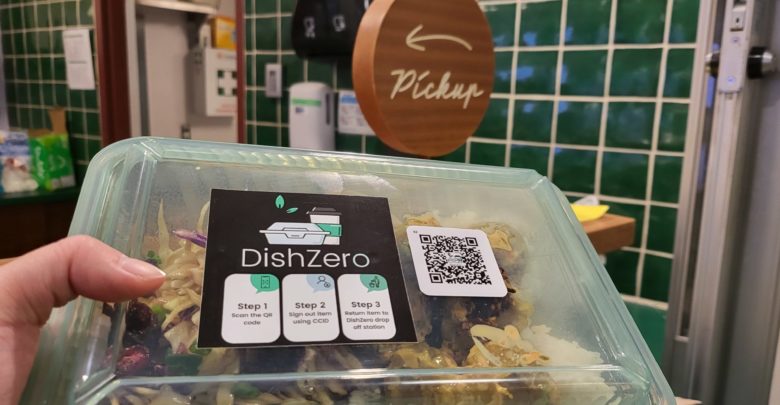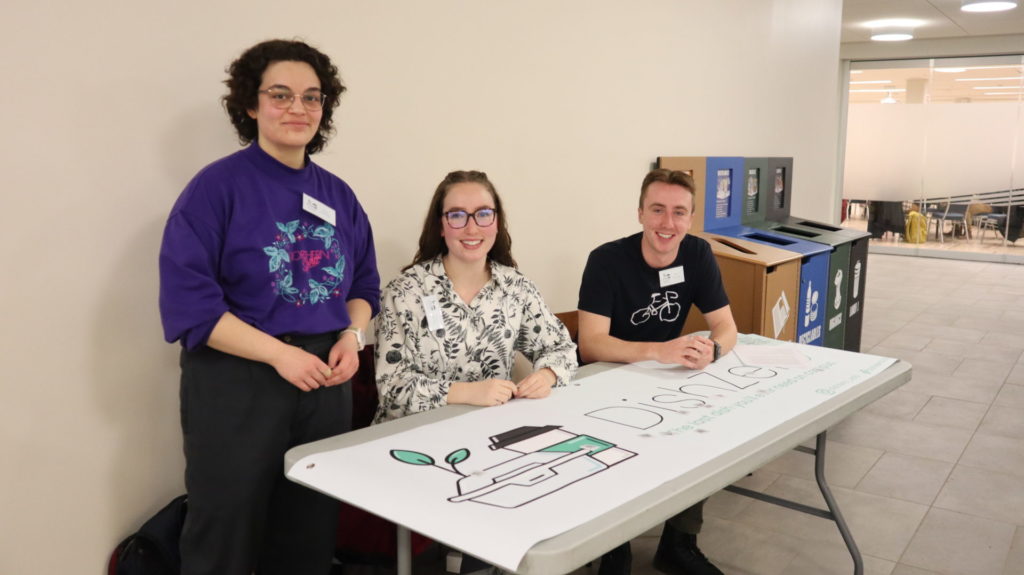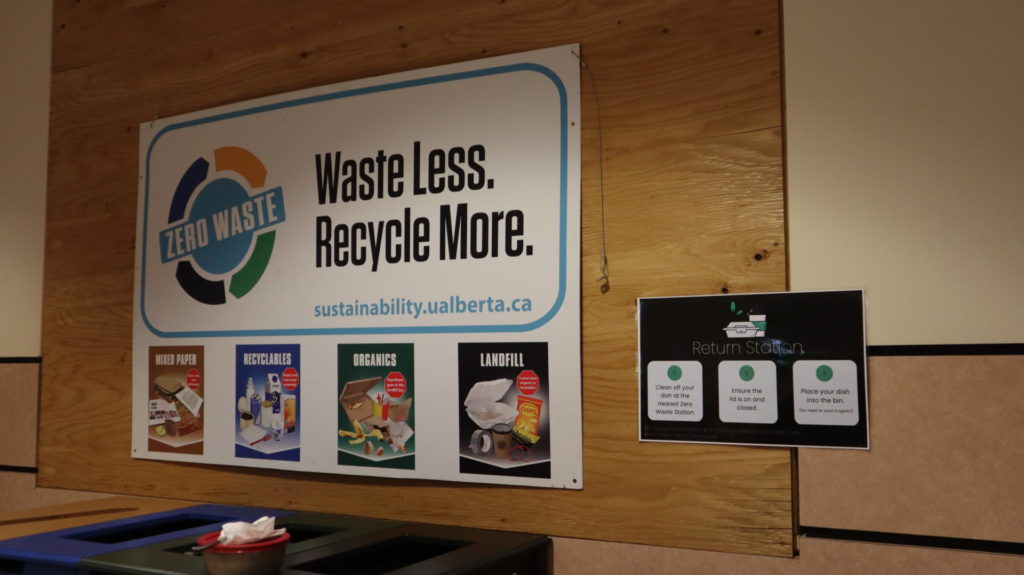Student-led initiative aims to decrease single-use waste from takeout
U of A alumnae created DishZero to make sustainability more accessible to everyone on campus.
 Arthur Macatangay
Arthur MacatangayAccording to the University of Alberta’s Zero Waste Dashboard, 771.87 tonnes of “landfilled materials” were collected in 2020–21.
This total includes North Campus, South Campus, Campus Saint-Jean, and Augustana Campus. Items that are sent to the landfill include styrofoam, coffee cups and lids, chip bags, snack wrappers, and pop cups, straws, and lids.
Student-led initiative DishZero, co-founded by alumnae Allegra Martel (co-president), Rojine McVea (co-president) and Alesi Muhlbauer, aims to reduce the number of single-use waste used for takeout on campus.
The program was launched on January 16 in the Student’s Union Building (SUB), during which free coffee and Filistix coupons were given out to promote the program.

The co-founders came together in 2020, when Martel, McVea, and Muhlbauer realized they were working on separate, but similar initiatives.
“At the time, I had started the Engineering Students’ Society mug share program, and we were doing reusable cups within the faculty of engineering. When COVID-19 hit we had to shut that down,” Martel said.
At the same time, McVea and Muhlbauer were working on making reusable takeout containers more accessible on campus.
“When we heard about [each other’s] initiatives, we were like, ‘why don’t we just combine and bring both reusable cups and takeout containers to campus, and come together under one organization?'” Martel said.

Sustainability Zero Waste poster near The Daily Grind
The co-founders hope that DishZero will make sustainability more accessible to everyone on campus, while diverting single-use takeout containers from the landfill.
“One of our more specific goals is to divert at least 20 per cent of the daily single-use takeout container and mug waste in participating buildings,” Martel said.
Made of polypropylene, the containers and mugs are microwave and dishwasher safe. The dishes used in the program can last up to five years. McVea said that the dishes aren’t only eco-sustainable, but financially sustainable for vendors as well.
“It would save a vendor $50 or more a year, as they’re not having to buy the compostable or paper alternative,” McVea said. “You save at least 1,000 dishes if you’re able to use the polypropylene mug or container to its entirety, and when they’re done we give them to TerraCycle for sustainable recycling.”

Right now, DishZero is offered at Filistix and The Daily Grind, both located in SUB. Both vendors are offering discounts to those who ask for a DishZero dish; Filistix is offering a 10 per cent discount, and The Daily Grind is offering 25 cents off from each purchase. DishZero is hoping to expand to more locations across campus in the future.
After asking for an order to be served in a DishZero dish, customers are able to digitally sign out the dish for 48 hours through a QR code glued on the mugs and dishes.
“When you’re done, instead of throwing it in the garbage like you would with a disposable dish, we have specific DishZero return bins by the Zero Waste stations,” Allegra said.
Volunteers are then responsible for bringing the dirty dishes to sanitization, and restocking clean ones.
“We wanted to [have] a ‘by campus, for campus’ approach,” McVea said. “As recent students, we have a better understanding of what students need, because we were once students ourselves.”





